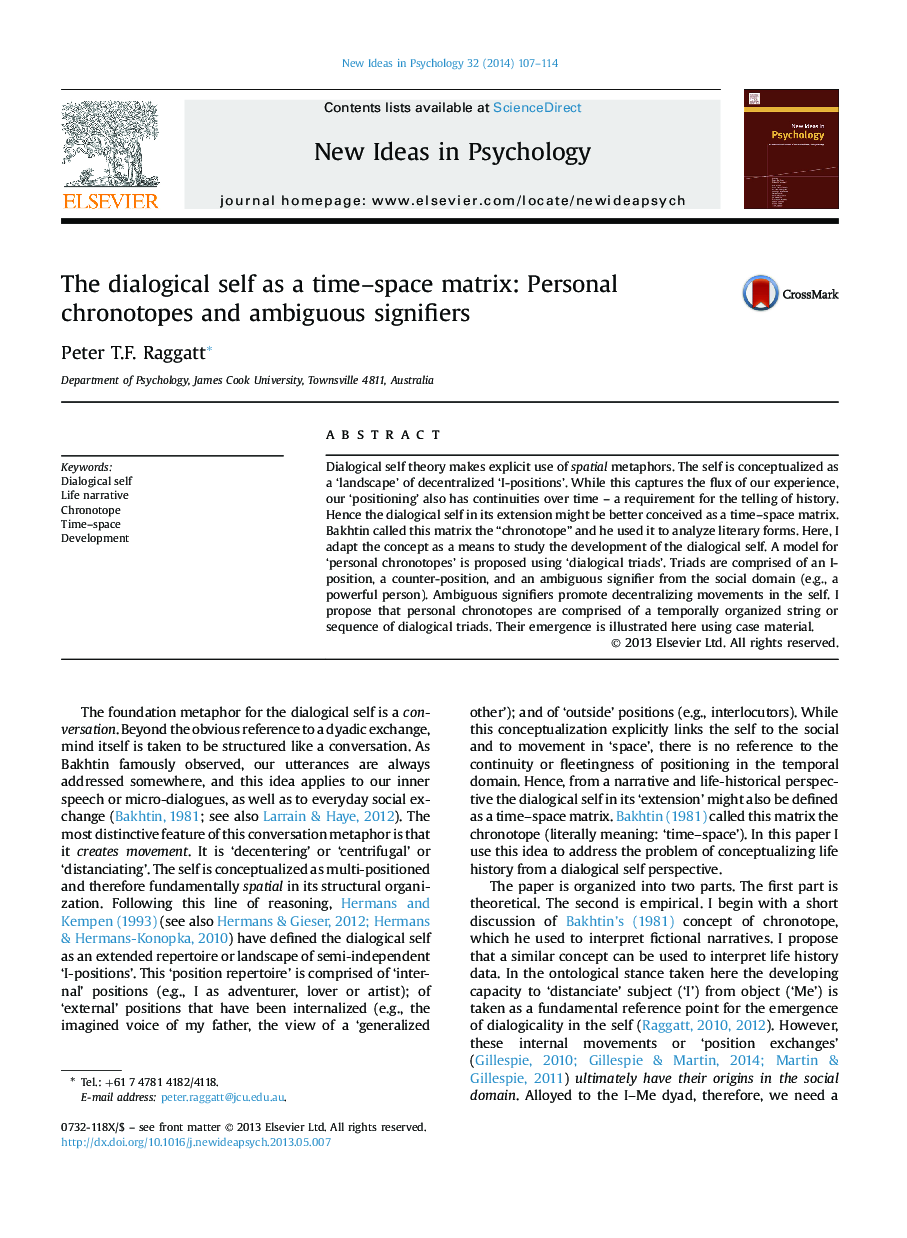| Article ID | Journal | Published Year | Pages | File Type |
|---|---|---|---|---|
| 331534 | New Ideas in Psychology | 2014 | 8 Pages |
•Dialogical self, life narrative, and life history.•Dialogical self and personal chronotopes.•The dialogical self as a time–space matrix.•Dialogical self and positioning processes over time.•Ambiguous signifiers as mediators of positioning.
Dialogical self theory makes explicit use of spatial metaphors. The self is conceptualized as a ‘landscape’ of decentralized ‘I-positions’. While this captures the flux of our experience, our ‘positioning’ also has continuities over time – a requirement for the telling of history. Hence the dialogical self in its extension might be better conceived as a time–space matrix. Bakhtin called this matrix the “chronotope” and he used it to analyze literary forms. Here, I adapt the concept as a means to study the development of the dialogical self. A model for ‘personal chronotopes’ is proposed using ‘dialogical triads’. Triads are comprised of an I-position, a counter-position, and an ambiguous signifier from the social domain (e.g., a powerful person). Ambiguous signifiers promote decentralizing movements in the self. I propose that personal chronotopes are comprised of a temporally organized string or sequence of dialogical triads. Their emergence is illustrated here using case material.
